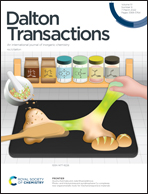One-pot synthesis of stable and functional hydrophilic CsPbBr3 perovskite quantum dots for “turn-on” fluorescence detection of Mycobacterium tuberculosis†
Abstract
All-inorganic CsPbBr3 perovskite quantum dots (QDs) are widely studied owing to their excellent optoelectronic properties; however, they are usually hydrophobic and unstable in water and thus their biomedical applications are seriously limited. In this study, stable and hydrophilic CsPbBr3 QDs functionalized with carboxyl groups (CsPbBr3–COOH QDs) were prepared in one-pot with the aid of new ligands amino-poly(ethylene glycol)-carboxyl and perfluorooctyltriethoxylsilane. The aqueous solution of CsPbBr3–COOH QDs maintained the initial fluorescence intensity after 8 days of storage; the free carboxyl groups on the surface of CsPbBr3–COOH QDs were covalently conjugated with amino-terminal DNA to construct CsPbBr3 QDs-DNA probes for subsequent application. Then, a biosensing platform utilizing fluorescence resonance energy transfer between hydrophilic CsPbBr3 QDs-DNA and MoS2 nanosheets was developed for the sensitive and selective detection of the Mycobacterium tuberculosis DNA with a low limit of detection of 51.9 pM and the identification of drug-resistant clinical strains. This study advances the preparation of hydrophilic carboxyl-functionalized CsPbBr3 QDs with enhanced stability and extends their application in biomolecule detection.



 Please wait while we load your content...
Please wait while we load your content...